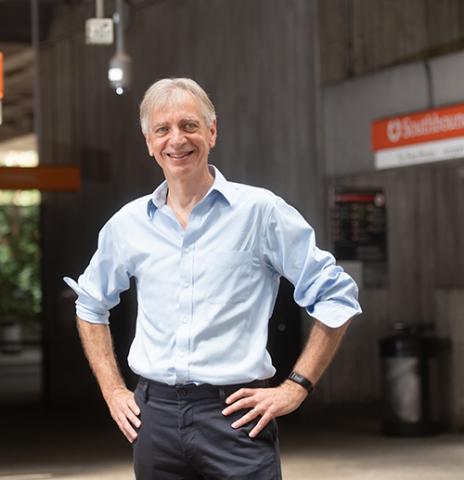As U.S. power grid operators increasingly incorporate natural sources such as solar and wind into their energy mix, they must grapple with the irregular supply of such resources. In contrast, while conventional energy resources such as natural gas and coal contribute to climate change, they are advantageous in their predictability. Grid operators have been able to accurately forecast their supply and demand for decades, resulting in reliable power availability for their customers.
In order to find a way to manage the intermittency – or stochasticity – of natural energy sources that introduce additional risks and uncertainties into energy supplies, the Department of Energy has awarded a three-year, $3.25 million grant to an interdisciplinary team led by Pascal Van Hentenryck, A. Russell Chandler III Chair in the H. Milton Stewart School of Industrial and Systems Engineering (ISyE). In addition to ISyE, the team includes the Department of Civil and Environmental Engineering at Vanderbilt University and the Midcontinent Independent System Operator (MISO). Their project, “Risk-aware Market Clearing for Power Systems” (RAMC), will examine how to assess and minimize risks when integrating renewable sources of energy, and how to advance stochastic optimization, machine learning, and their integration to meet the challenges of integrating substantial shares of renewable energy in the generation portfolio.
Van Hentenryck is particularly enthusiastic about working with MISO. The RAMC team will begin by learning from six years’ worth of operational data from MISO, which has a large and complex power system that stretches from Minnesota to Louisiana and incorporates numerous windfarms. The collaboration is also unique in that MISO has a strong research team that has already been actively working to solve the challenges of using natural sources of energy.
“MISO is one of the most innovative transmission operators in the U.S.,” Van Hentenryck said. “This partnership means that the research will be driven by real models and data, and will evaluate, with high fidelity, the impact and benefits of the optimization models the RAMC team creates.”
The Vanderbilt team brings decades of experience in risk assessment, which will be an integral part of the paradigm shift needed to address the increased stochasticity in load and generation. The goal is to transfer, adapt, and expand risk models from the financial industry and other engineering disciplines.
The group from ISyE includes A. Russell Chandler III Professor Roshan Joseph, Anderson-Interface Early Career Professor and Associate Professor Andy Sun, and Coca-Cola Chair in Engineering Statistics Jeff Wu, as well as undergraduate, Ph.D., and postdoctoral students. They are specifically looking at how to solve the stochastic optimization problems arising in MISO’s real-time operations. Their high dimensionality, and the real-time constraints, raise fundamental challenges in computational statistics, stochastic optimization, risk assessment, and machine learning.
“The entire RAMC team brings a distinctive multidisciplinary expertise,” Van Hentenryck noted. “It is only through the tight integration of these fields that we can hope to overcome the computational barriers."
Accurate modeling of supply and demand for wind and solar is also a boon for consumers and national security interests, lowering costs and reliance on energy providers outside the U.S. Ultimately, the RAMC team intends to generate scalable solutions that can be adopted by other grid operators in addition to MISO.


